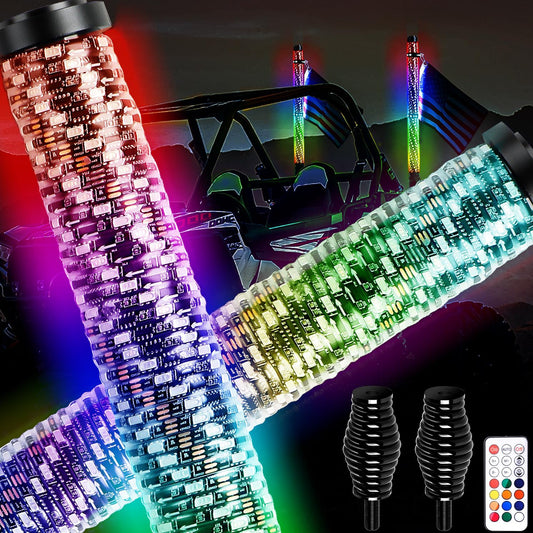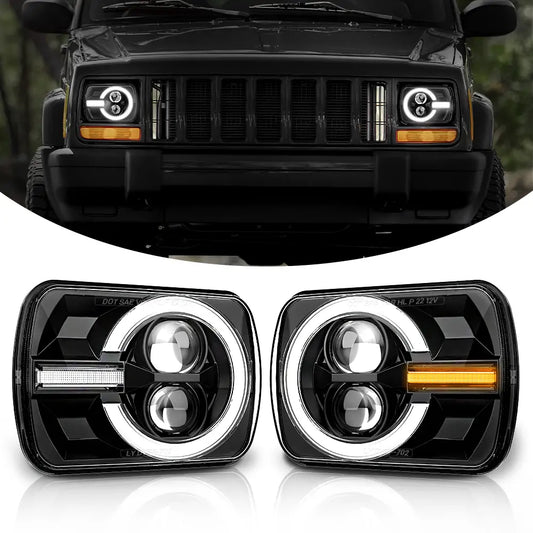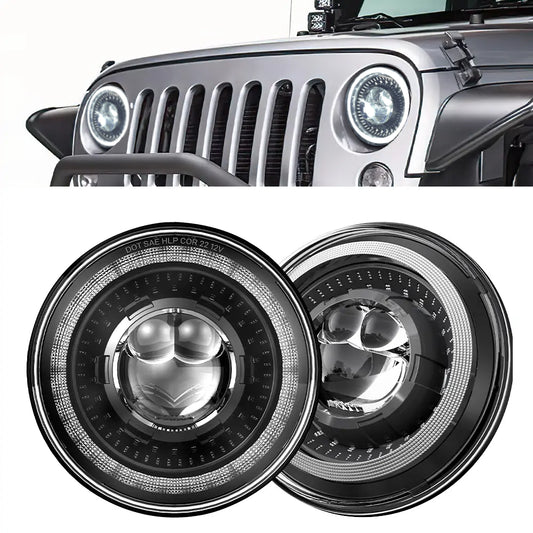When it comes to selecting off-road lighting, the debate between amber and white lights is a common discussion among enthusiasts. As winter approaches, the importance of effective lighting becomes even more crucial, especially in challenging conditions like snow and darkness. Let's objectively explore the disparities between amber and white off-road lights to assist you in making an informed decision.
Understanding Color Temperature
The color temperature is the way that we measure the color of a light, and the unit of measurement for color temperature is degrees Kelvin. As we look at the Kelvin scale, lower values are going to be more into the warmer colors, such as the amber's and the yellow’s, and the higher values on the Kelvin scale are going to get into the whites and then the blues and then the violets. So something like this and amber lights going to be in the range of about 2500 to about 4000 degrees kelvin, whereas something like this a white light is going to be in that 4,000 to 5,000 range, and then as we get closer to 6 to 7,000, we're getting into the blues and the violets. And now the ideal color temperature or the ideal off-road light really depends on your purposes. and so we're going to get into that in a little bit here.

Achieving Amber Lighting
There's two different ways of achieving the amber color to an off-road light.
Amber Covers
The first way is by adding some sort of amber cover that goes over the white light source. These amber covers are great but they are going to reduce a little bit of that output from the light itself. Now in turn the benefit of these covers is that you can have an amber light when you need it but you can also have a white light when you don't need it.
Amber Light Source
The second way of achieving the amber color to light is through the actual light source itself.
A halogen light has closer to a 3,000 degree Kelvin light, an LED light source you can pick in a variety of different colors. You can get an amber LED chip exactly the same way that we do on our Honeycomb driving lights' DRL.
Pros and Cons of Amber and White Lights
We have known the big differences between an amber and a white off-road light, we can start discussing the question of which is better. And we can look at some of the pros and the cons for each of these two different lights.
We're going to start with some of the downfalls of a higher color temperature or a cooler light. The first big downfall of these lights is that they offer less contrast when compared to a lower color temperature or an amber light, this is exactly why it's important when selecting a white light to ensure that the output has minimal blue or violet tint to it. Ideally it has no blue or violet tint to it at all.


The second big downfall of a higher color temperature light is that they have shorter wavelengths which results in more refraction and so what that basically means is that as you're driving in poor weather conditions, such as dust fog snow, anything like that, you're gonna have more glare and more of the light is going to bounce off. Those airborne particles back into your eye and that's where the amber light really shines through.
The amber light has longer wavelength so it's able to cut through some of those airborne particles, a little bit better than the white is and that's the big benefit of amber's. Now on the flip side, the white lights definitely appear to have a lot more usable light and a lot more output even if the actual power going into them is the exact same. So to your eye, the white light is gonna appear brighter than the amber light. But the amber light is certainly going to Excel when you have poor driving conditions such as the dust, the rain, the snow, the fog, anything like that.
Ultimately, the decision between amber and white lights depends on your driving environment and preferences. If you frequently encounter snow, dust, or fog, amber lights, especially those with interchangeable covers, provide a versatile solution. Conversely, if your driving conditions are predominantly clear, white lights may suffice for your needs. For you facing diverse driving conditions, investing in off-road lights that offer both amber and white color options can be an excellent solution. Products like LOYO's Honeycomb Driving Lights provide this versatility, allowing you to adapt to various environments seamlessly.
LOYO 7 inch Honeycomb Driving Lights

The latest LOYO designed Honeycomb style driving lights come with two-color driving lights, offer versatile functionality with white spot beam flood beam combo, and amber DRL, catering to various driving conditions. The 6000k white light is perfect for regular driving, providing optimal visibility. While the 3500k amber light serves multiple purposes, functioning as a clearance marker and turn signal light, and is particularly effective in foggy or dusty conditions. These dual-color lights combine the benefits of both amber and white hues, ensuring optimal visibility and performance across a range of driving scenarios.
With a die-cast aluminum body, durable PC lens, robust Honeycomb grille, and an IP67 waterproof rating, our rugged lights are perfect for all daily drive cars or weekend off-road. Whether you're cruising on asphalt or conquering mud, in rain or shine, our pods excel in all conditions, guaranteeing exceptional visibility every step of the way!




